Timber clads interior and exterior of Kleinkindhaus nursery in Germany
Asymmetric windows complete the angular timber-clad volumes of this nursery in Heilbronn, Germany, by local studio Mattes Sekiguchi Partner Architekten (photographs by Zooey Braun + slideshow).
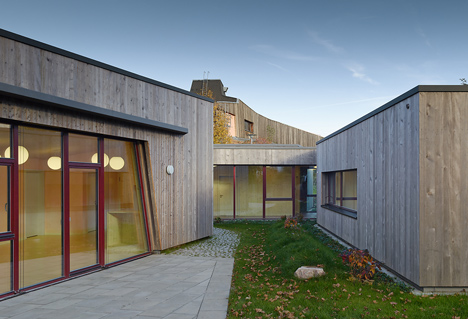
Mattes Sekiguchi Partner Architekten designed the wooden Kleinkindhaus as a complex of playrooms and learning spaces for Heilbronn's Waldorf School.
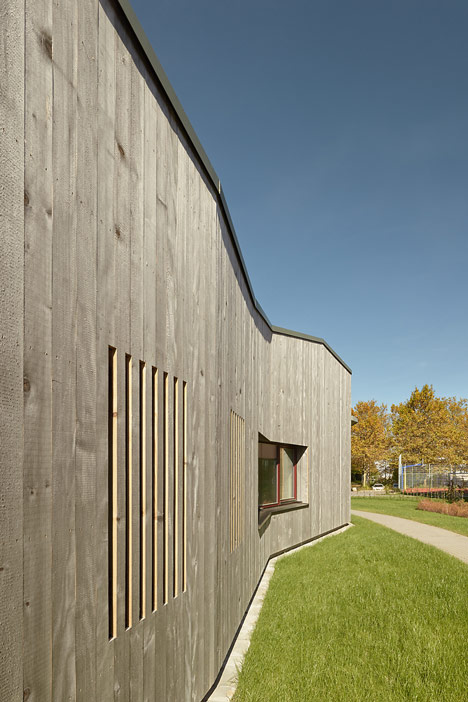
To complement the building's green surroundings, the architects sourced Swiss pine to create an exposed wood-panelled facade and a bare wooden interior.
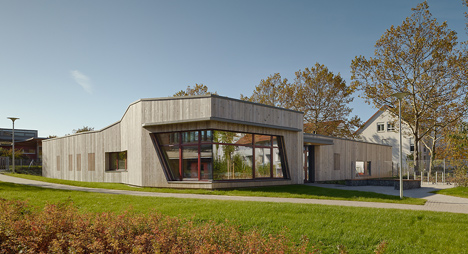
"The timber construction is a natural and elemental method of building," architect Kristina Heuer told Dezeen. "The building is inspired by nature. It literally grows out of the site and unfolds like an organism."
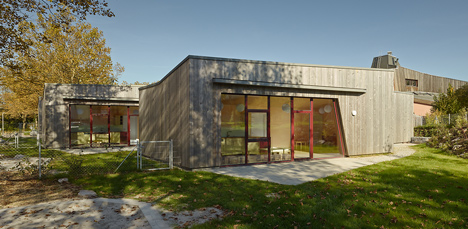
Situated between the existing school building and the kindergarten, the timber-clad nursery is inspired by Rudolf Steiner's architectural theories promoting accessible spaces that open out to nature and are filled with natural light.
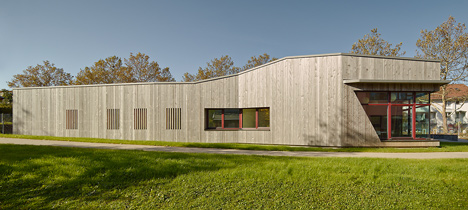
"The polygonal shape is a reaction to the surrounding landscape. It provides pleasant, sustainable and healthy space and therefore satisfies the social, physical, and spiritual needs of its occupants," explained Heuer.
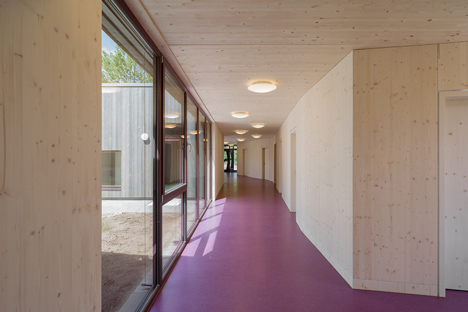
Angular windows puncture the exterior walls, while gill-like slits allow natural ventilation.
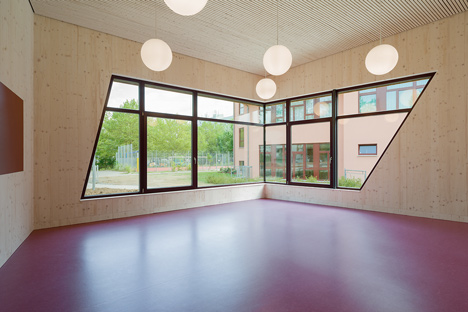
The elongated section of the building acts as a backbone for three protruding group activity rooms, connected by a long corridor. These rooms open out into an external play area and include areas for the children to rest.
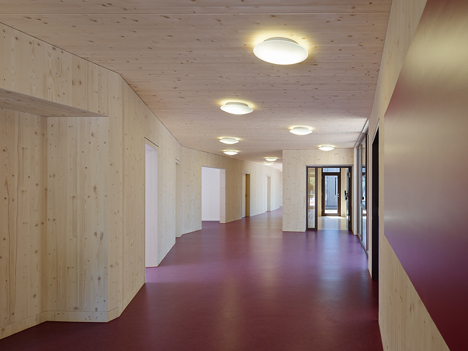
"For us, it was very important to create a light and open environment for the children and nursery nurses," said the architect.
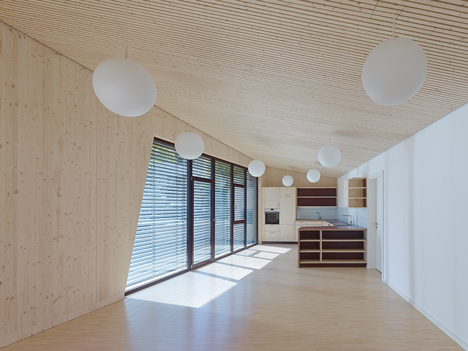
The main entrance leads to a multi-purpose room and reception area for guests, while suspended orbs illuminate the way to the kitchen, office and storage rooms.
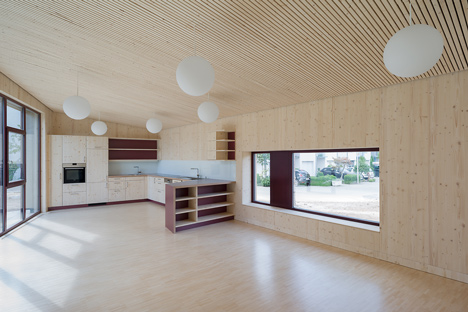
Other spaces include a computer room and a wardrobe where children can store their coats.
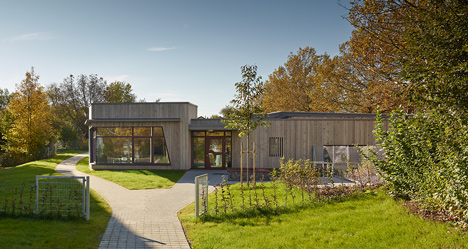
Photography is by Zooey Braun.
Here's more information from the architects:
Kleinkind-house Heilbronn
The free Waldorf school Heilbronn is situated in a green oasis, between two poles: the large-scale development of schools and the university in the north and east, and the heterogenous housing development in the west and south. The new Kleinkind-house was built between the main building and the kindergarten in a confined area.
An elongated ridge, opened by a multi-purpose room, houses the administration and the secondary rooms. It points the way to the arriving people, guides and accompanies their way and protects the attached three buildings of the group rooms like a strong backbone.
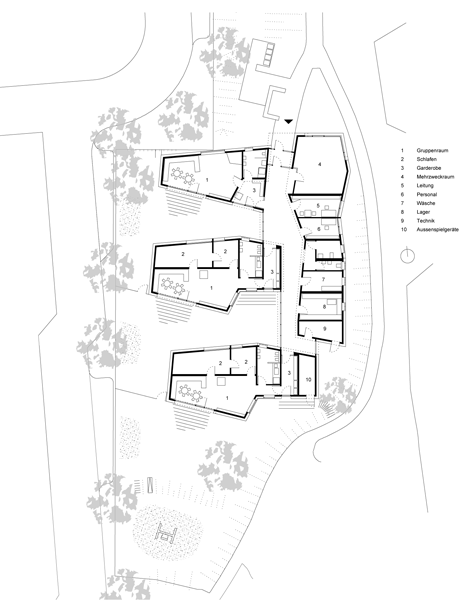
Those three group rooms stick like fingers into the green space, joggle with it and form individual south- facing open spaces. An in-between zone is formed between the group rooms and the backbone, which self- evidently construes the situation of entrance. Insides, it sets the space for public and semi-public movement and communication.
The whole building is polygonal reshaped in ground plan and elevation. The resulting flowing spaces follow the anthroposophical architectural idea of Rudolf Steiner. It creates diverse and high-quality spacial situations with different connections of views and outdoor spaces. There are places, which invite to stay, to play, to move, to learn or to rest. An open, light and friendly atmosphere couples with good clarity and easy orientation.

Using the wood planking façade and wood panelling interior walls, the wooden frame construction is made visualised and experienceable. The choice of material follows the logic of organic construction. On one side the building is integrated into the surroundings and on the other side it is conform to the users need for natural and harmonic building materials.
Location: Max-Planck-Strasse 56/1, 74081 Heilbronn
Client: Verein für Waldorfpädagogik Unterland e.V.
Architects: mattes · sekiguchi partner architekten BDA
Project architects: Fabian Ehehalt, Ramona Schröder
Landscape architecture: Pascal Bauer, Heilbronn
Completed: 08/2013